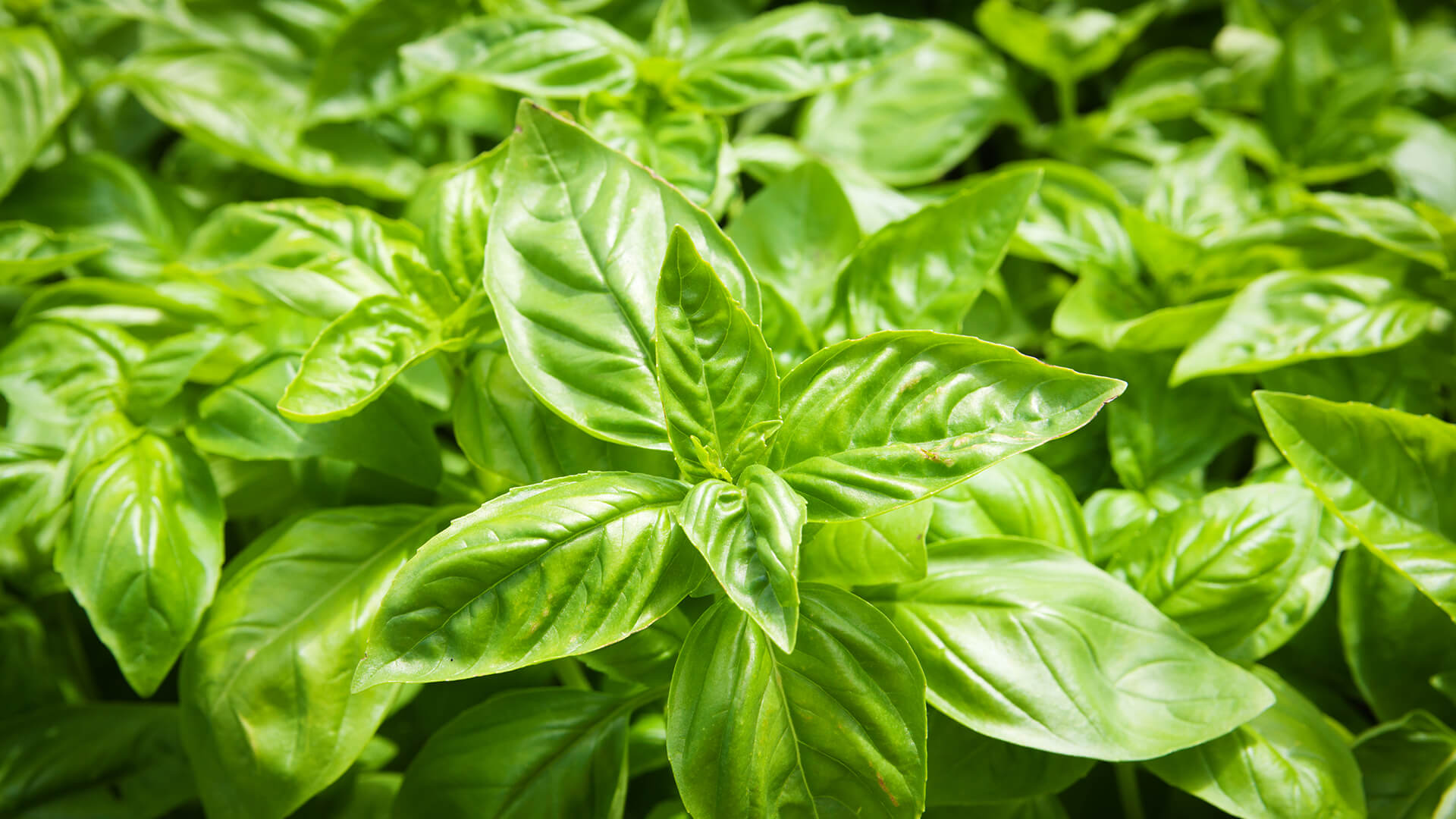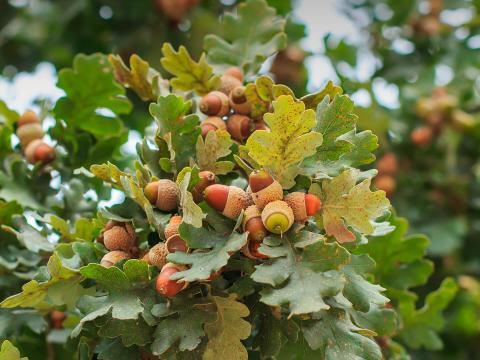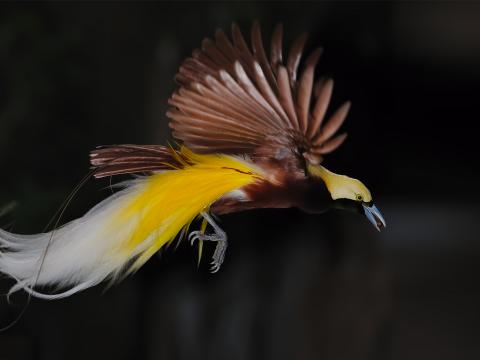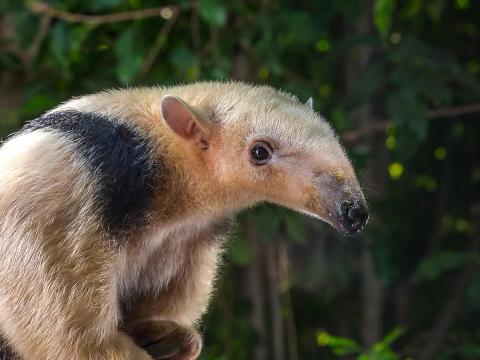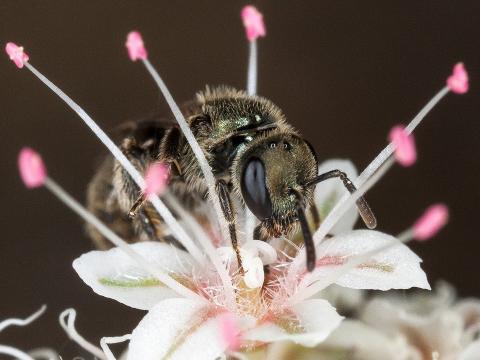Sweet Basil
- Division: Tracheophyta
- Class: Magnoliopsida
- Order: Lamiales
- Family: Lamiaceae
- Genus: Ocimum
- Species: basilicum
Overview
All hail basil, the king of herbs! The fragrant and popular sweet basil gets its royal status from its name, Ocimum basilicum: Ocimum is from the Greek word okimom, meaning aromatic herb, and basilicum is from the Greek word basileus, meaning king. It could also be considered regal because it is familiar in so many cultures, including the ancient Egyptians, Greeks, and Romans, and it is thought to have been cultivated in India for more than 5,000 years. It was apparently introduced to Europe from India in the late 1500s. There are several varieties of basil, but sweet basil is the most commonly grown, with more than 60 varieties to please the palates of those who love Italian, Indian, Greek, and Southeast Asian cuisines, among others.
Characteristics
Basil is an annual herbaceous plant in the mint family Lamiaceae. It has square stems with leaves that grow on opposite sides, and the leaves are rounded, slightly cupped, and curve to form at point at the tip. The leaves are generally light green, although some varieties have reddish or purplish leaves. The stems can grow to between 12 and 50 inches high (30.5 to 125 centimeters), depending on variety and conditions.
The flowers are small, usually white in color and arranged along a spike that grows from the tip of the stem. After pollination, the flower falls off and four round, dry structures called achenes develop, each one containing a seed. The seeds are small, dark, and edible.
Well known as a culinary herb, basil has many varieties with different scents and flavors. This is the result of the essential oils that the plant produces in its leaves, which vary in their composition. For instance, the clove scent of sweet basil is derived from eugenol, the same chemical that is found in actual cloves. The citrus scent of lemon basil and lime basil reflects a high portion of citral and limonene, which gives lemon peel its scent. African blue basil contains camphor and camphene in higher proportions. Licorice basil contains anethole, the same chemical that makes anise smell like licorice.
Cultivation
Basil prefers full sun and is hardy when grown in warm climates, but it doesn’t tolerate cold and will die off when temperatures drop to freezing. In addition to use in the kitchen, basil can also be grown as a pretty and nicely scented ornamental plant in garden borders and beds. Prune it every few weeks to keep it compact.
Once a stem produces a flower spike, foliage production stops on that stem, the stem becomes woody, and essential oil production declines. To keep the leaves growing, pinch off any flower stems before they mature. If desired, a few stems can be allowed to flower—bees love the little white blossoms—and produce seeds, which can be saved and planted the following year. Picking the leaves off the plant helps promote overall growth: the plant responds by converting pairs of leaflets next to the topmost leaves into new stems.

